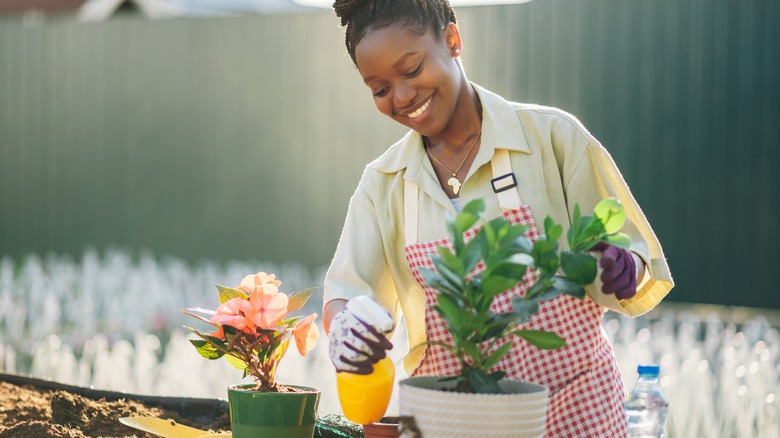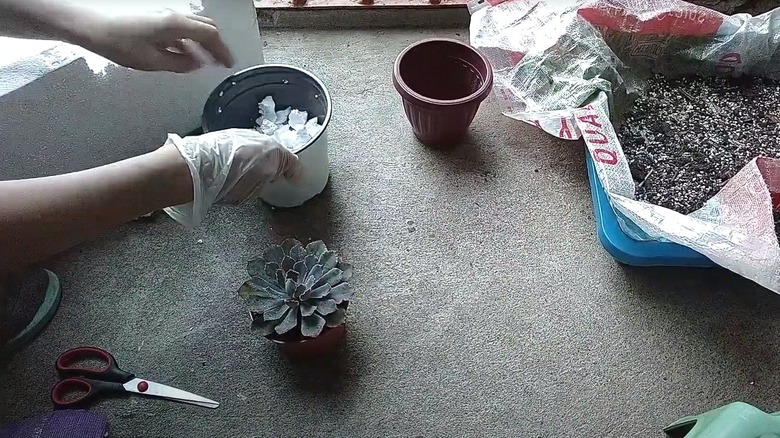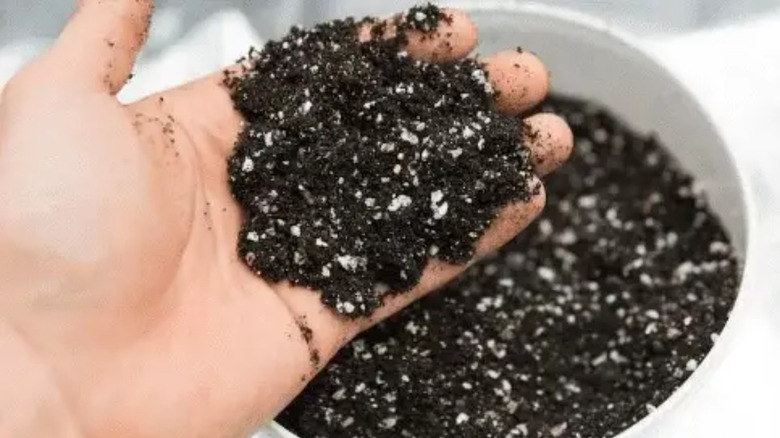What Happens To Your Flowers If You Add Styrofoam For Improved Drainage
Many homeowners dream of having planters filled with bright, colorful flowers framing their patio or porch. However, this can be tricky to achieve if you lack the knowledge to keep container plants thriving. After all, they need sunlight, the right soil mix, and proper drainage for healthy growth. Back in the day, many gardeners suggested mixing styrofoam packing material with your soil to help improve drainage and aeration for potted plants. However, this can create significant problems. In the worst scenario, you can even up with all your flowering plants suffering from root rot due to waterlogged soil.
Opinions about styrofoam used as a soil amendment are mixed; some think it's a good addition due to its light and airy characteristics, while others believe styrofoam won't improve your pots' drainage. If you need help with flower pots at home, we'll explain why mixing styrofoam peanuts with your soil won't fix anything; we'll also show some things you can do to improve drainage.
Why you shouldn't mix styrofoam with your potting soil
Planting anything in a pot with inadequate drainage is not advisable, and using styrofoam to solve this issue will only harm your flowers and plants. For one, its synthetic nature provides no nutrients to the plants and is not helpful for the environment, as it can take up to a million years to decompose. Additionally, using styrofoam peanuts in your pots only brings dreaded outcomes to your plants; in many cases, the roots will grow into the styrofoam to rot and die. On the other hand, if the packing peanuts are made with a biodegradable formula, they will degrade over time due to moisture and block vital drainage channels.
Poor drainage can quickly lead to your potting soil becoming oversaturated. This leads to salts from fertilizers becoming trapped in the soil, where they can actually harm your plant. In addition, the air needed in the soil to allow roots to breathe and grow also stops flowing. Excess water sitting at the bottom of the pots causes bacteria and fungi to grow. If the leaves of your flowering plants become yellow and wilted, and the blooms die without apparent reason, your plant might be suffering from root rot.
Tips to improve drainage in your flower pots
There are many ways to improve drainage in flower pots. First, you must increase the number of drainage holes in your pots for excess water to escape; if the pot has none or only one, consider drilling extra holes at the bottom. Additionally, contemplate adding something to amend the soil instead of styrofoam; some materials will help you filter and drain excess water. Using perlite, a porous natural material commonplace in soil mixes, is a great way to help your pots' drainage and enhance airflow, allowing salts to drain out of the soil quickly.
There's also vermiculite, a mineral material with high water-retention properties and loads of nutrients to help your flowers feed from it. You can also use coarse sand to amend your potting soil and keep it loose, improving the water flow. Finally, other materials like pumice, clay balls, scoria, or pea gravel could work as soil amendments to improve the drainage of your soil mix. Considering all these options and putting some into practice, you can adequately care for your flowers and any other potted plants' drainage issues at home; it's best to leave styrofoam for packing purposes.


